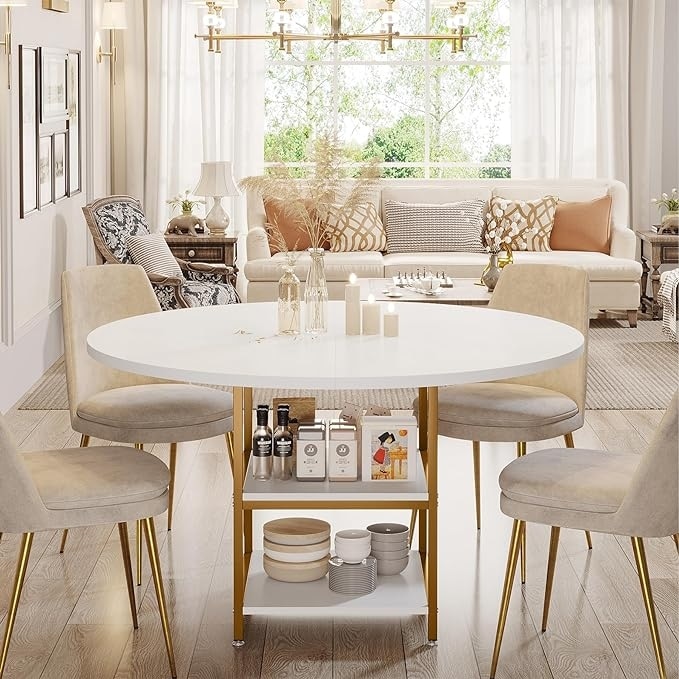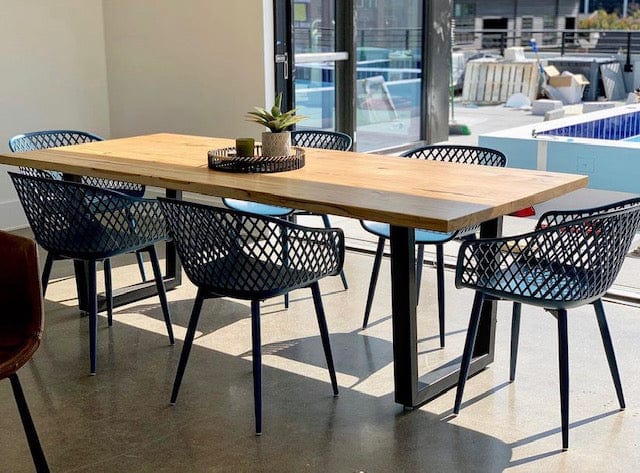Affordable and High-Quality Dining Room Table Legs for Every Budget
Affordable and High-Quality Dining Room Table Legs for Every Budget
Blog Article
From Standard to Modern: Locate the Ideal Dining-room Table Legs for Your Design
The choice of dining-room table legs plays a pivotal function in specifying the overall personality of your space, connecting the gap in between conventional workmanship and modern appearances. While traditional layouts such as cabriole and turned legs stimulate a feeling of timeless class, modern styles like hairpin and geometric options present a chance for striking visual passion. Evaluating the ideal balance in between these designs calls for a nuanced understanding of your existing decor and personal taste. As you take into consideration these aspects, the inquiry stays: exactly how can you effortlessly integrate these varied leg designs to produce an unified eating experience?
Understanding Table Leg Styles
The variety of eating room table leg designs can dramatically influence both the appearances and performance of the area. Each leg design adds special functional attributes and aesthetic components, accommodating diverse design preferences and use requirements. Comprehending these designs is critical for choosing the ideal table that lines up with your total indoor layout vision.
For example, tapered legs use a clean, classic appearance that can boost a space's beauty, while pedestal bases supply stability and maximize legroom, making them ideal for smaller rooms. Hairpin legs, a characteristic of mid-century contemporary style, introduce an industrial panache, permitting a ventilated, open feel. Likewise, trestle legs evoke rustic beauty, offering robust assistance and a feeling of timelessness.
Wooden legs can bring warmth and structure, whereas steel choices typically share a sleek, modern vibe. Eventually, recognizing table leg designs is vital for developing a cohesive dining location that reflects personal design while making certain usefulness and comfort.
Standard Table Leg Options
When picking dining room table legs, traditional choices commonly symbolize timeless beauty and workmanship. These styles reflect an abundant heritage and a commitment to quality, making them suitable for those who appreciate timeless aesthetic appeals.
One of one of the most iconic typical leg designs is the cabriole leg, characterized by its stylish bent shape. This design commonly features attractive makings and is most commonly found in Queen Anne and Chippendale furniture. An additional prominent choice is the transformed leg, which boasts a collection of smooth, rounded shapes that give a timeless look while maintaining stability.
Additionally, the straight leg, while straightforward, uses a strong and unadorned framework that can blend seamlessly with a selection of tabletop designs. For those drawn to ornate describing, claw-and-ball feet legs evoke a sense of majesty and can work as a spectacular focal factor in any eating area.
Finally, pedestal bases, although not purely legs, supply a different typical choice that permits ample legroom and can be perfectly carved. Each of these typical leg styles adds to the overall ambiance of a dining-room, marrying feature with visual appeal.

Modern Table Leg Layouts
Modern table leg designs offer a diverse series of designs that stress cutting-edge products and tidy lines. These designs often focus on functionality while serving as striking centerpieces within an eating room. Minimal aesthetic appeals are widespread, with legs crafted from products such as steel, glass, and engineered wood, which add to a airy and modern feel.
One popular style is the hairpin leg, characterized by its slim, tapered framework that offers stability without frustrating the table top (dining room table legs). This design is commonly located in mid-century find out here modern furnishings and can easily complement different table shapes. Another fad is the use of geometric forms, where legs may handle angular or asymmetrical kinds, adding visual rate of interest and a touch of virtuosity

Mixing Designs for One-of-a-kind Areas
Frequently, homeowners seek to produce special dining spaces that show their individual style by mixing various design components. This approach enables for the unification of varied appearances, resulting in a harmonious yet distinctive atmosphere. For example, pairing a rustic wooden table with sleek, modern steel legs can develop an attractive contrast that raises the room's general appeal.
In addition, integrating vintage table legs with modern table tops can evoke a feeling of background while maintaining a modern sensibility. Such mixes not only display private preference yet also encourage creative thinking, permitting property owners to curate an area that really feels both personal and welcoming.
Shade plays a critical role in this mixing process; picking table legs that complement or comparison with the existing color pattern can boost aesthetic passion. As an example, whitewashed legs can soften the daring of a dark table surface area, developing a well balanced visual.
Tips for Selecting the Right Legs
Choosing the right table legs is necessary for attaining both performance and aesthetic charm in your dining room. Begin by considering Website the total style of your space. Traditional settings benefit from legs that include detailed makings or turned layouts, while modern areas may call for streamlined, minimal styles.
Next, examine the elevation and security of the legs. dining room table legs. Typical table vary between 28 to 30 inches in elevation, so make sure the legs complement this measurement for comfort. Furthermore, durable materials, such as hardwood or metal, can enhance security and long life
Assess the leg shape also-- alternatives include directly, tapered, or stand styles. Straight legs supply a classic look, while conical legs can add a touch of style. Pedestal bases supply sufficient legroom and are perfect for smaller sized areas.
Conclusion
In recap, picking the excellent dining-room table legs needs mindful consideration of both conventional and contemporary designs. Typical options such as cabriole and transformed legs provide ageless elegance, while modern-day styles like hairpin and geometric shapes provide a modern touch. By harmonizing leg style, height, and product with the overall decor, a natural and inviting environment can be achieved. Inevitably, the picked table legs should mirror the preferred aesthetic, enhancing the eating experience within the room.
The range of dining space table leg styles can significantly affect both the aesthetic appeals and performance of the room. Ultimately, understanding table leg designs is essential for producing a cohesive eating location that mirrors individual design while making certain usefulness and convenience.One of the most iconic typical leg styles is the cabriole leg, identified by its graceful bent form. Straight legs offer a timeless appearance, while tapered legs can include a touch of beauty.In summary, selecting the ideal dining room table legs requires cautious factor to consider of both typical and contemporary designs.
Report this page